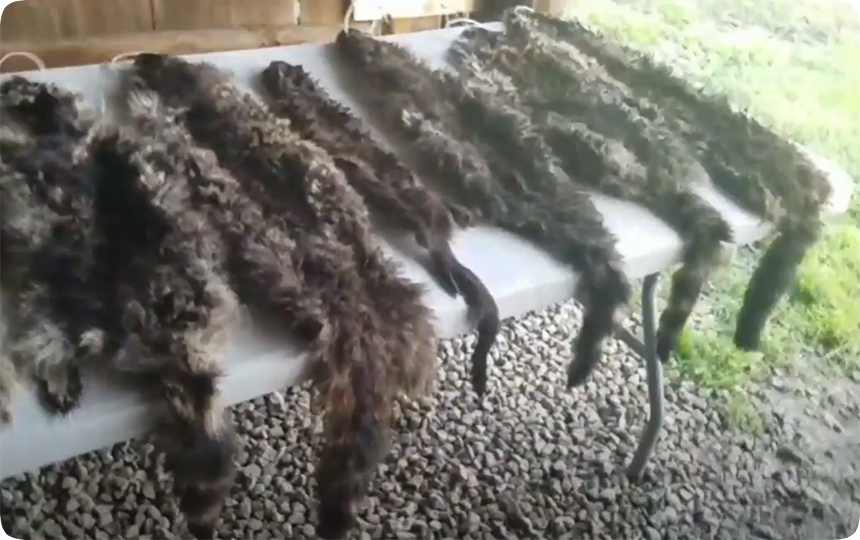-
info@aaanimalcontrol.com
Call us for help in your town
Humane Wildlife Education
Redman's Creed: Resource Conservation

11.05.2022 -
Author: Philip J. Nichols
Ernest Thompson Seton (founder of the Boy scouts) wrote The
Gospel of the Redman in which he recounts the culture, beliefs and
practices of the indigenous people of the Americas, as told by Tecumseh,
Pontiac, Crazy Horse, Powhatan, Sitting Bull and others.He tries to put into
words, to understand the Indian culture, from a white man's perspective.
One cultural theme common to all tribes is the practice of resource
conservation. This concept applied to the buffalo, salmon, turtle and all
other harvested creatures, means that all parts of the animal have a value
and purpose, to be used as much as practical and possible: skin, scales,
fur and hair, skull and bones, meat and fat, claws and teeth, glands,
organs, sinew and gut.
This idea has found recent resonance and relevance because of
covid. Covid caused a worldwide contraction of many things including the
Chinese and Russian market demand for raw fur. Trappers faced record
low prices for most items and either stopped producing altogether, or found
other, non-traditional outlets. One such outlet developed during the covid
shutdowns, as people lost regular jobs altogether, or were sent to work
from home. A good number of them used this time to explore their creative
self. Artistic expressions in crafting, garment making, weird taxidermy and
other talents created a demand for raw material.
As work shutdowns lifted and covid has diminished, these people
have not flocked back to their old jobs. Instead of returning to the security
of a steady paycheck, many have now found the way to live their dream
and get paid. This new sub-culture of crafter/artist creators needs raw
materials that are being provided by the people who have access to these
materials, trappers and hunters. Another potential source of raw materials
are nuisance wildlife control operators (NWCO.) Some have already
discovered this outlet to profit from animal remains they would normally
discard in the trash.
This scene is relatively new to NWCO’s, and it remains to be seen
how many will see it as worth the effort it takes. For a larger operation with
year-round work, a fleet of trucks, and employees, the business model
where animal remains are simply disposed of (trash, burial, cremation,
etc.,) would not allow for treating remains as a product. However, in smaller
operations, down time and slow seasons could be used to practice this
conservation ethic. What does this look like in reality?
The process starts immediately when the animal is killed since the
first consideration is to halt or slow down decomposition. In a warm climate
situation the carcass is kept in an ice filled cooler. External body fluids and
blood are removed and the body is bagged in plastic. At this point the
decision will be to sell it whole without any further processing, or to remove
saleable parts (skin, meat, glands, etc.) to sell individually. Another option is
to freeze the animal until buyers are found, and the terms of sale are
agreed on.
For example: when a taxidermist advertises their need for a whole
animal, the NWCO having that animal (frozen in the freezer) reaches out to
the taxidermist. The price, method of shipping and who pays shipping are
agreed on. Example: a whole frozen otter shipped across four states cost
$60.00 UPS ground. It arrived in three days and was still frozen
(February)...the taxidermist paid $125.00 for the otter plus the $60
shipping. Shipping frozen animals is best done in the winter.
Packaging for the otter example was a styrofoam box (from old
Omaha Steaks box,) that was then put inside a cardboard box provided by
the UPS shipping depot. Lacking a free styrofoam box, a cheap styrofoam
cooler can be had at the Dollar Store. The costs involved in packaging and
shipping are most always dictated and paid for by the receiver.
Selling a whole creature is the easiest way, but more money can be
made by knowing how to process an animal using the protocols required by
the end user. Know how to prepare skins for life sized taxidermy and you
will get much more than the market value for raw fur processed for the raw
fur market. Skull collectors want skulls undamaged (no bullet holes) and
fresh frozen. Unusual animals such as albino, odd color, and extremes of
normal size for a specimen, are sold at a premium.
Non-fur animals also have a market: alligator hide, teeth, claws and
skull: antelope hide, horns, skulls and capes: deer, moose and elk skulls
with antlers, capes and sinew: javelina hides and skulls: marmot and
groundhog hides and skulls: mountain beaver and moles frozen whole:
gamebird hides and feathers, snake skins and turtle shell. Quantities of
items are needed for jewelry (e.g. penis bones from raccoon, mink, fox,
etc.,) and laboratories (e.g. embryo’s, frogs, neonates, worms, eyeballs,
etc.)
You can get an idea of some of the things being done with these
natural materials by searching Etsy and Pinterest. Enter “fur crafts” in the
search box.
etc.)
Here are three resources that list buyers for natural products:
(1) Moscow Hide & Fur ( furbuyer.com is the catalog and price list
of items that they are currently interested in buying)
(2) Trapper to Taxidermist (private facebook forum for buying and
selling wildlife products)
(3) Taxidermy.net (internet based community for free exchange)
It goes without saying that all federals, state and local laws are your
responsibility to know.
For more wildlife stories, click my Wildlife Blog
or click my below banner to hire a local trapper.




















